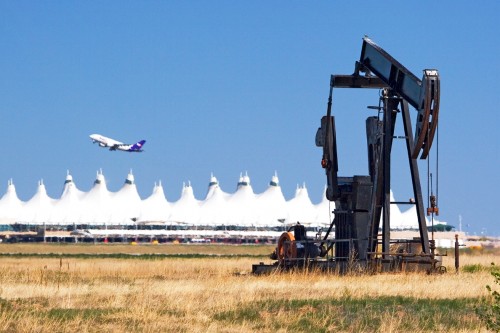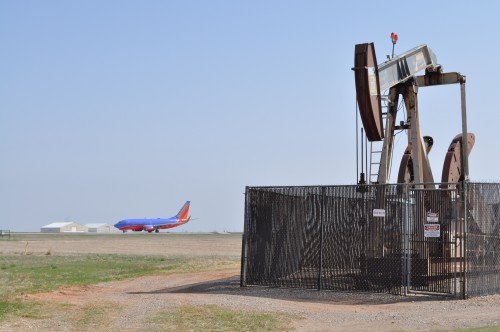Like other airports, Pittsburgh International supplements its revenue from airlines with fees from parking, concessions, advertising and other sources.
But now that the FAA has given its approval, PIT can add funds from oil and gas drilling to its income ledger .
The airport has a deal with Consol Energy that came with a $50 million signing bonus and the promise of payments and royalties of an estimated $25 million annually for at least the next 20 years.
“Other airports have other advantages. They may have better flight patterns or be close to major markets,” said Allegheny County Executive Rich Fitzgerald. “But we have this natural gas that others may not have.”
Federal Aviation Administration rules restrict how airports can spend drilling dollars and other non-aeronautical revenue.
“So we can’t take this new money and put it into the jail or the court system or the park system,” said Fitzgerald. The county is using the cash to reduce landing, terminal and ramp fees paid by airlines. “That makes us more desirable and will help us attract more airlines and more flights to our airport,” he said.
Pittsburgh International isn’t the first airport to dig deep in the ground for extra revenue. Drilling contracts generate cash for Dallas/Fort Worth, said DFW spokesman David Magaña.
DFW received a $186 million bonus from Chesapeake Energy for a natural gas exploration lease signed in 2006.
“We had plans for as many as 300 wells on airport grounds,” Magaña said, “but we stopped at 112 in 2010 because of the drop of natural gas prices in the market.”
In 2008, when drilling began, DFW earned $33.9 million in royalty revenue. In 2013 royalties were $5.3 million.
“We certainly earn more money from other things,” said Magaña. “For example, we probably earn about $120 million a year on parking. But the gas revenues are a bonus that allows us to do things we wouldn’t have done.”
Early on, DFW used drilling income to make terminal improvements that customers would “notice and appreciate,” said Magaña. That included replacing all seating and flight monitors and updating all the fixtures in the restrooms.
Denver International Airport has 76 wells on its property and in 2012 oil and gas production generated over $6.2 million.
“That revenue is not a large chunk of our budget,” spokesman Heath Montgomery said. “For comparison, last year we saw record concession revenue of about $295 million. But oil and gas production is a way of generating non-airline revenue to help offset the airlines’ cost of operating so the airport can remain globally competitive.”
In Denver, Suncor buys the oil and Anadarko buys the natural gas while the airport owns the wells and manages the overall system.
With three Reserve Oil & Gas gas wells that began producing in November 2013, 790-acre Yeager Airport in Charleston, W.Va., isn’t in the same league, drilling-wise, as Dallas and Denver.
“We expect a steady $40,000 a year in royalties over a 40-year period, said Yeager Airport director Rick Atkinson, “but for a budget of our size that’s nothing to sneeze at.”
Atkinson said the funds can’t be used “to remodel the director’s suite to look like I’m an oil baron,” but the additional revenue stream will enable the airport to do small additional projects each year.
To get permission, the FAA must determine that under the National Environmental Protection Act, the wells would have no significant impact on the environment, Atkinson said. The other divisions of the FAA approve the wells from an air-space and air-traffic-control aspect and for impacts on future aviation developments at the airport, he said.
In Oklahoma City, three airports—Will Rogers World Airport and two general aviation/corporate airports—together have 87 active wells, generating more than $2.5 million in revenue in 2013, about 2.5 percent of the revenue for the city’s Department of Airports.
Several oil rigs—some of them pumping—can be seen by passengers from the airfield.
“They’re not just there for decoration,” said airport spokeswoman Karen Carney.
Tulsa International Airport doesn’t have any wells but it does have a 13-foot-tall, 56-foot-wide mural by Delbert Jackson titled “Panorama of Petroleum.”
The city of Tulsa doesn’t allow drilling within city limits, so instead, “we celebrate the region’s position as a leader in the energy sector by displaying the mural—which was once displayed in the Smithsonian Institution—in our terminal,” airport spokeswoman Alexis Higgins said.
(My story about drilling for oil and natural gas at airports first appeared on CNBC Road Warrior)

